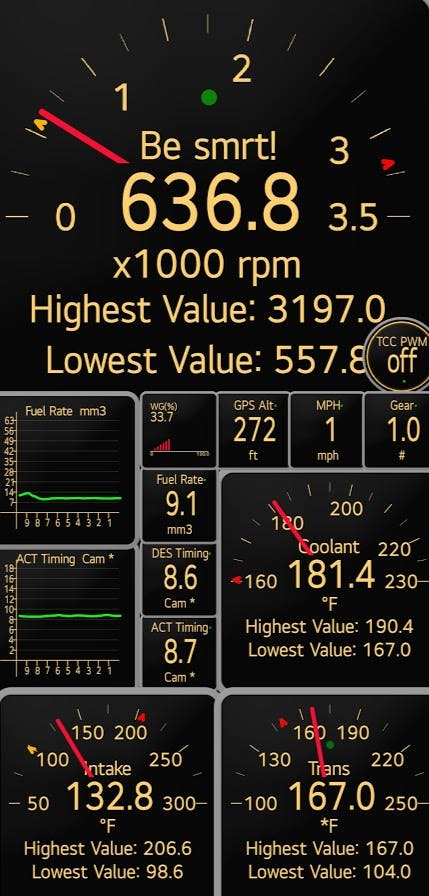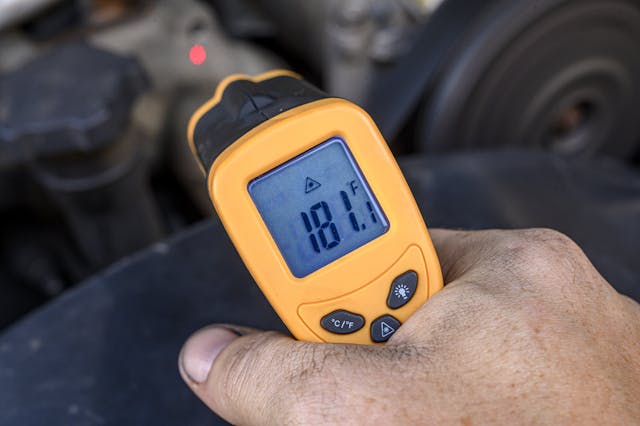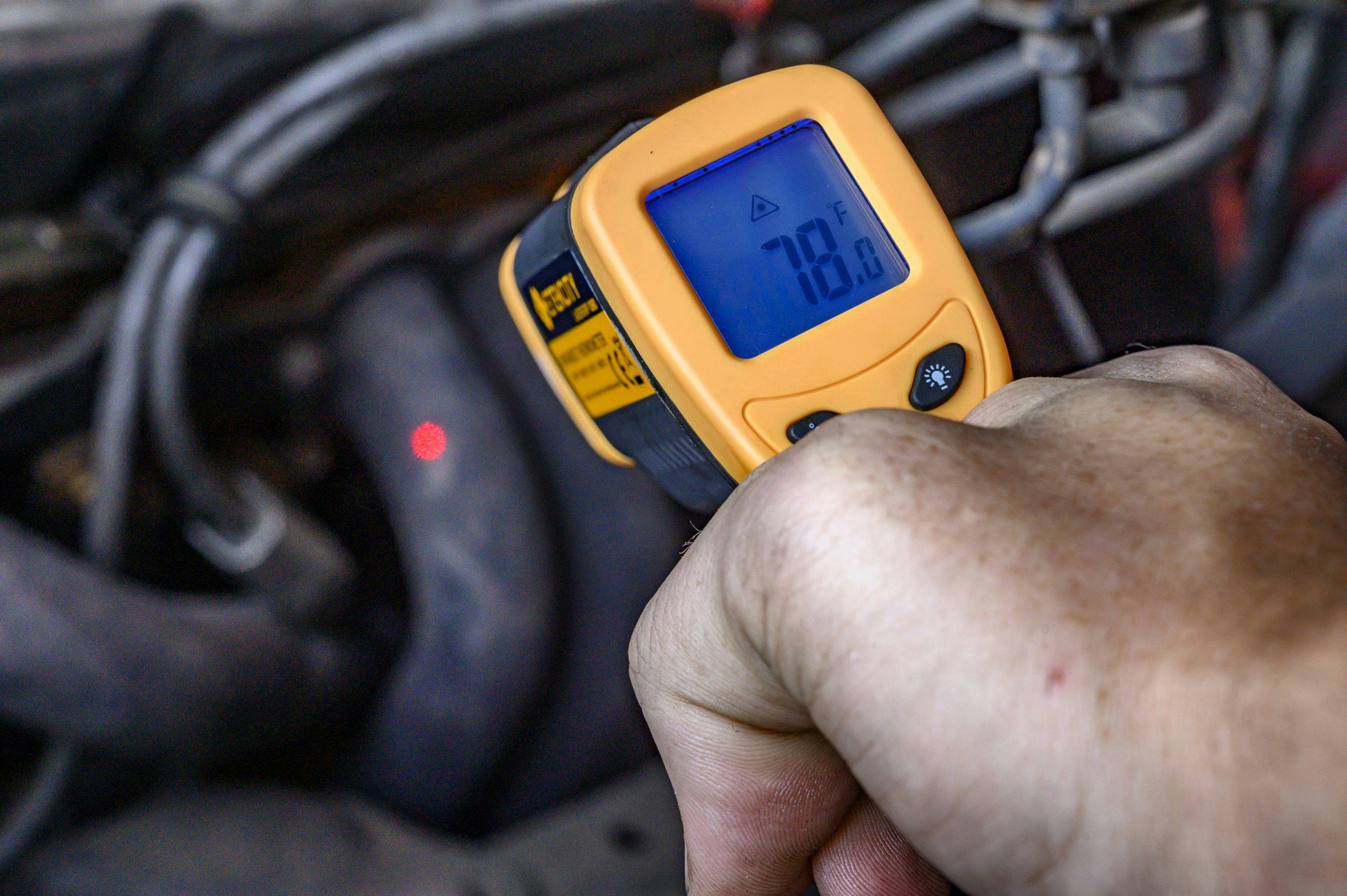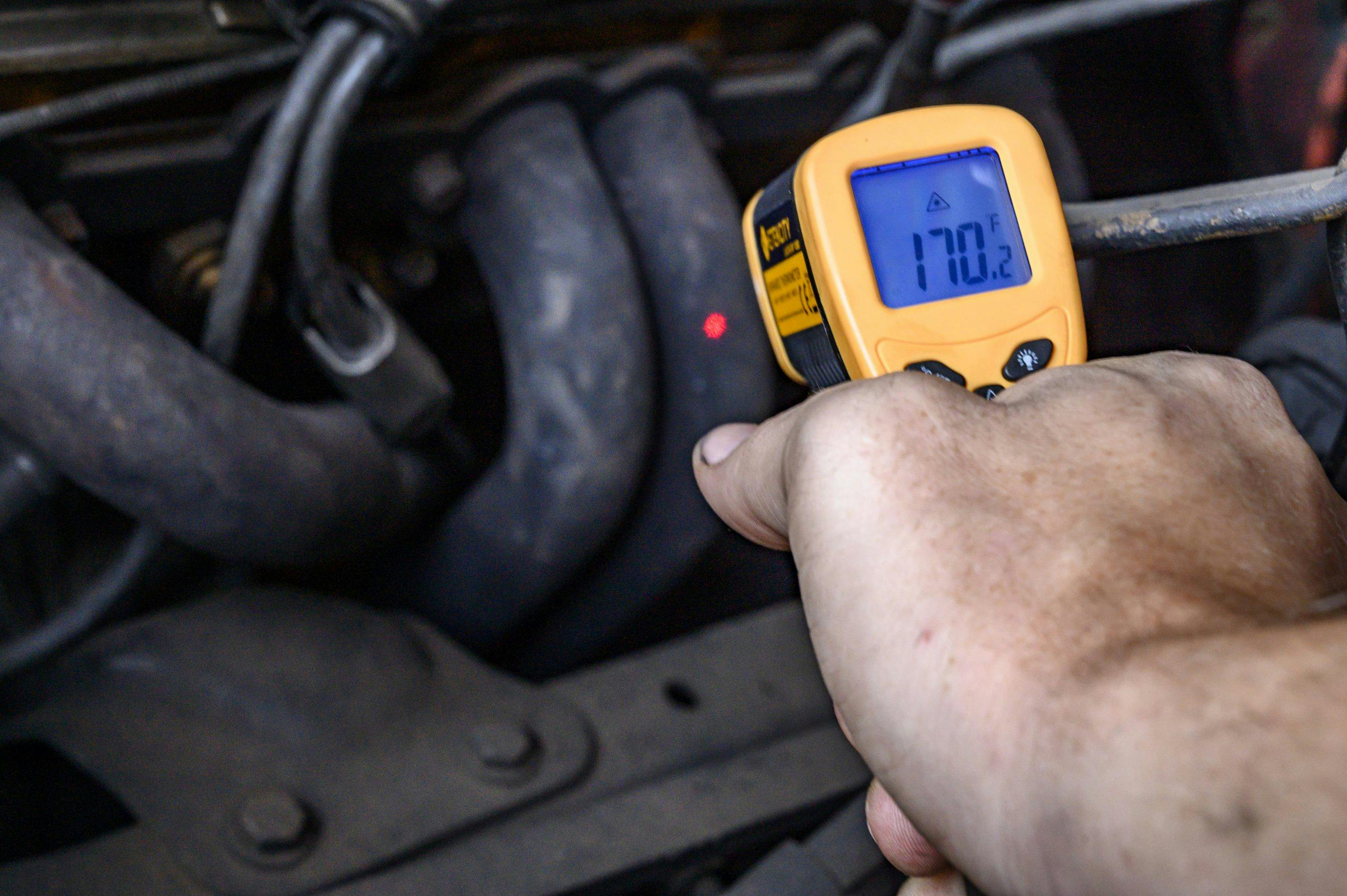Wrenchin’ Wednesday: Using invisible light to find problems
Non-contact infrared thermometers, more colloquially known as IR temp guns, are incredible tools for diagnosing issues in your project. There’s a few myths out there on how they work, but today we’ll cut through the fog to show you how to use them and a little bit behind how these magic tools do their job.
Finding mis-fires
A dead cylinder can be caused by everything from a simple fouled spark plug to a catastrophic failure inside the block, and quickly finding which one isn’t firing can be vital during initial diagnosis. When that cylinder is misfiring, it will tend to run colder than its neighboring holes, as there’s less spent gas heading out the exhaust valve, which can be quickly seen in the temperatures of the primaries of an exhaust manifold or header. Each cylinder can vary from the next by 50 degrees or so as they operate at their own temps. That is especially true with a carbureted engine’s generally poor fuel distribution favoring the center cylinders while often starving the outer ones. If one cylinder is significantly colder than the others, it’s a dead-ringer that you’ll find a problem there.
If you haven’t already broken out your listening tools, this is where it becomes a game of sniffing farther from outside the motor or pulling a valve cover or spark plug to see what’s happening inside.
Double-checking your electronics
As vehicles age, their electrical systems can begin to build up weak points. One common issue is a gauge that’s inaccurate for one reason or another, and the first part of diagnosis into larger electrical problems is to confirm if the vehicle’s sensors are reading accurately. Coolant temp is one of those things you don’t want to trust to a faulty gauge or tired wiring, so an IR temp gun can be used to double-check that everything is reading normal.

Using an OBDII adapter, we can see that the ECU thinks coolant temp is around 181 degrees, and the sensor is placed in the thermostat housing. So with the trusty IR temp gun, it’s just a matter of scanning the housing, which thanks to aluminum’s heat-transferring attributes will be resting at the coolant’s temp.

And sure enough, the IR temp gun confirms the ECU’s temp sensor, which is vital to the performance of the engine as the ECU uses this information for everything from ignition timing to fuel ratios.
Finding heat from unwanted friction

Bad wheel bearings, stuck calipers, and a wealth of other small failures can be caught by comparing chassis components to their twins on the other side of the vehicle. If you have a stuck caliper, for example, you’ll tend to see that one caliper and rotor will always be hotter than the other. Wheel bearings will also show abnormal heat during failure, and this can be the easiest way to spot a dying trailer wheel bearing during fuel stops, too.
Infrared, not laser, thermometers

There’s a common misconception that these thermometers use the laser beam to take the temperature, but the fact is that the laser is just there to help you aim – no more, no less. Every IR temp gun will have a sticker that shows its “distance-to-spot” ratio, which is kind of like showing the angle of view on a camera lens. The ratio here, 12:1, means that for every 12 inches of distance from the object, the area that the IR temp gun is seeing grows by an inch — or simply, at one foot away, the spot it’s measuring is about an inch-wide.
This is important to note if you’re trying to measure something in tight confines, and it helps to be cognizant of the laser’s position over the IR sensor so that you can be sure of where you’re actually measuring. In my IR temp gun, the laser is on top of the IR sensor, meaning that it’s measuring just below where the laser dot is pointing on the object.
The type of surface matters too, as smooth surfaces like chrome and glass will often read lower than their physical temps, just due to the way that ambient IR light bounces off those surfaces. IR light, which we can’t see, radiates at different colors depending on the temperature of the object they bounce off of. The IR temp gun acts like a super low-res infrared camera, essentially seeing the world with a single pixel and judging temperature based on what color it’s reading.




